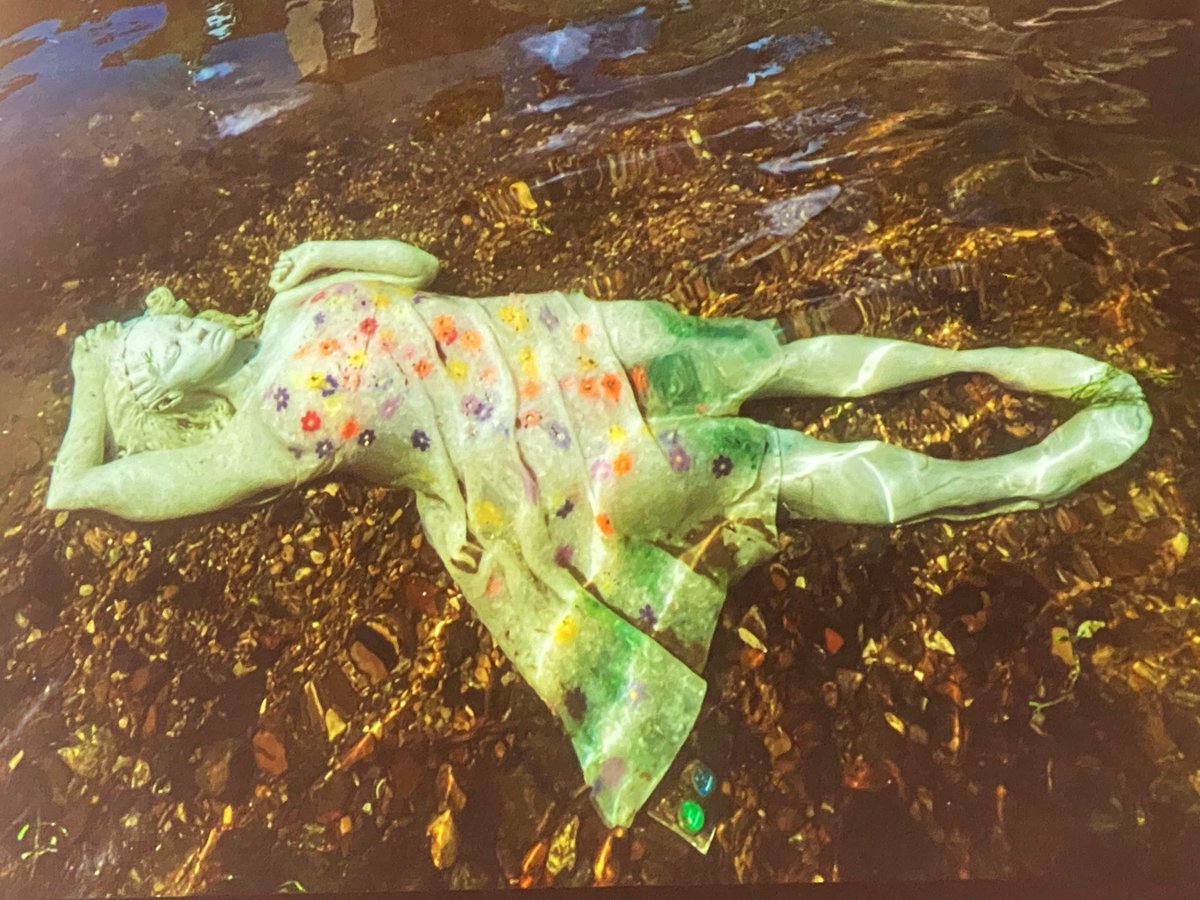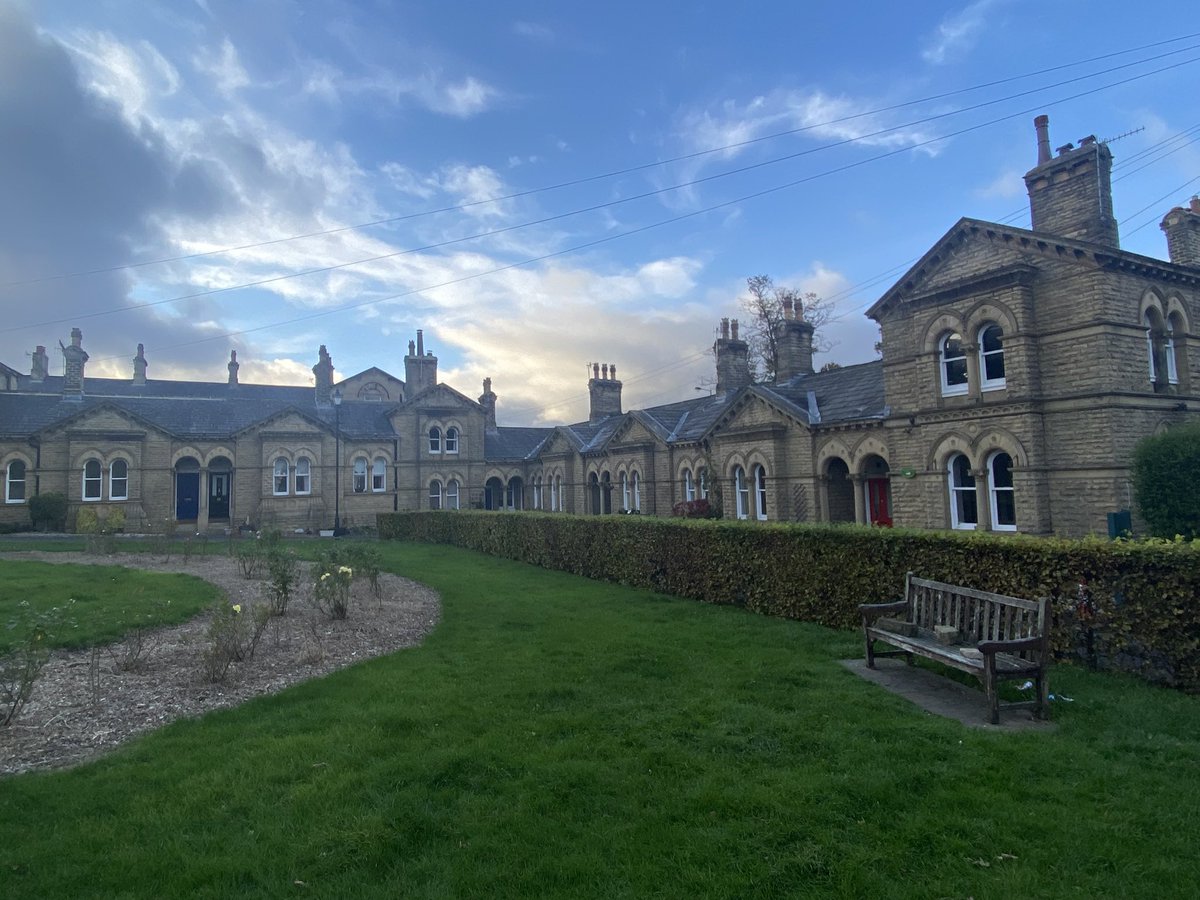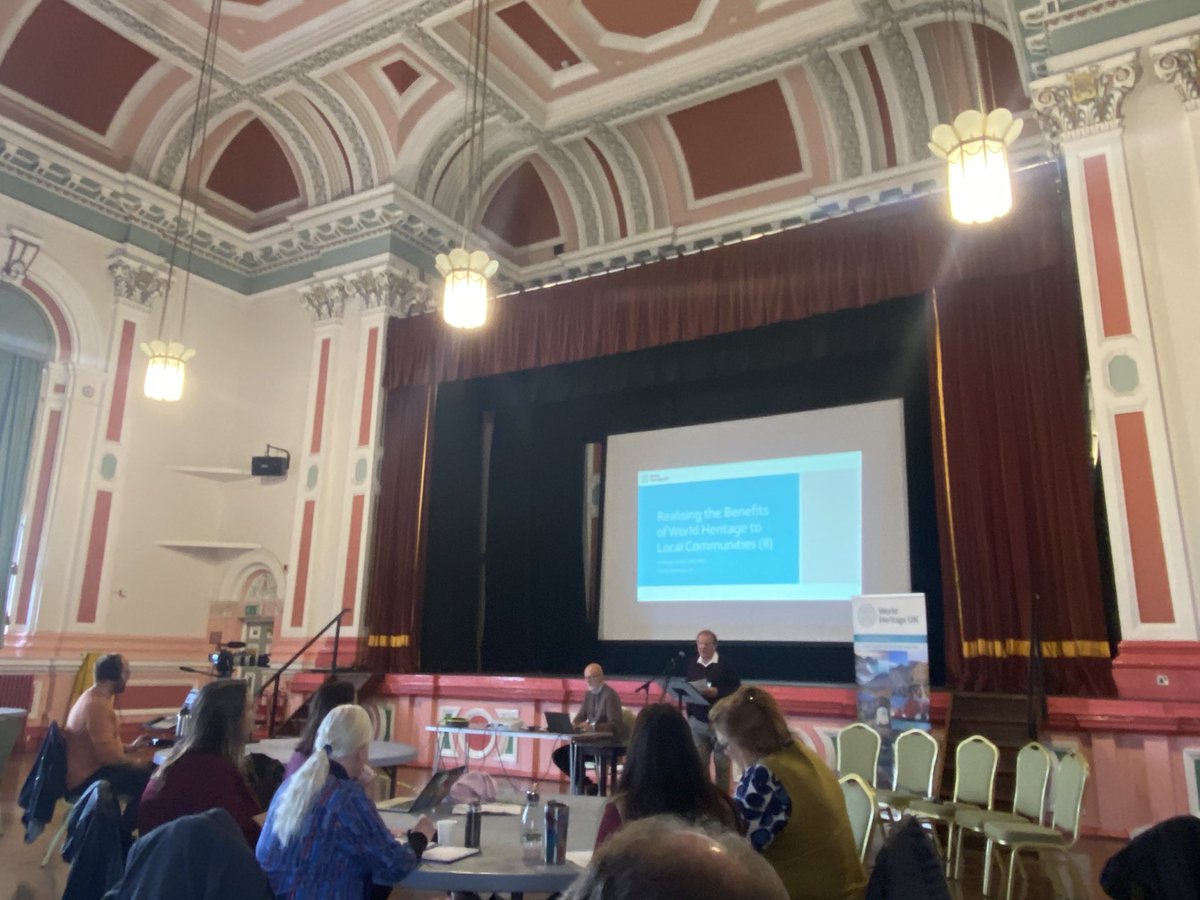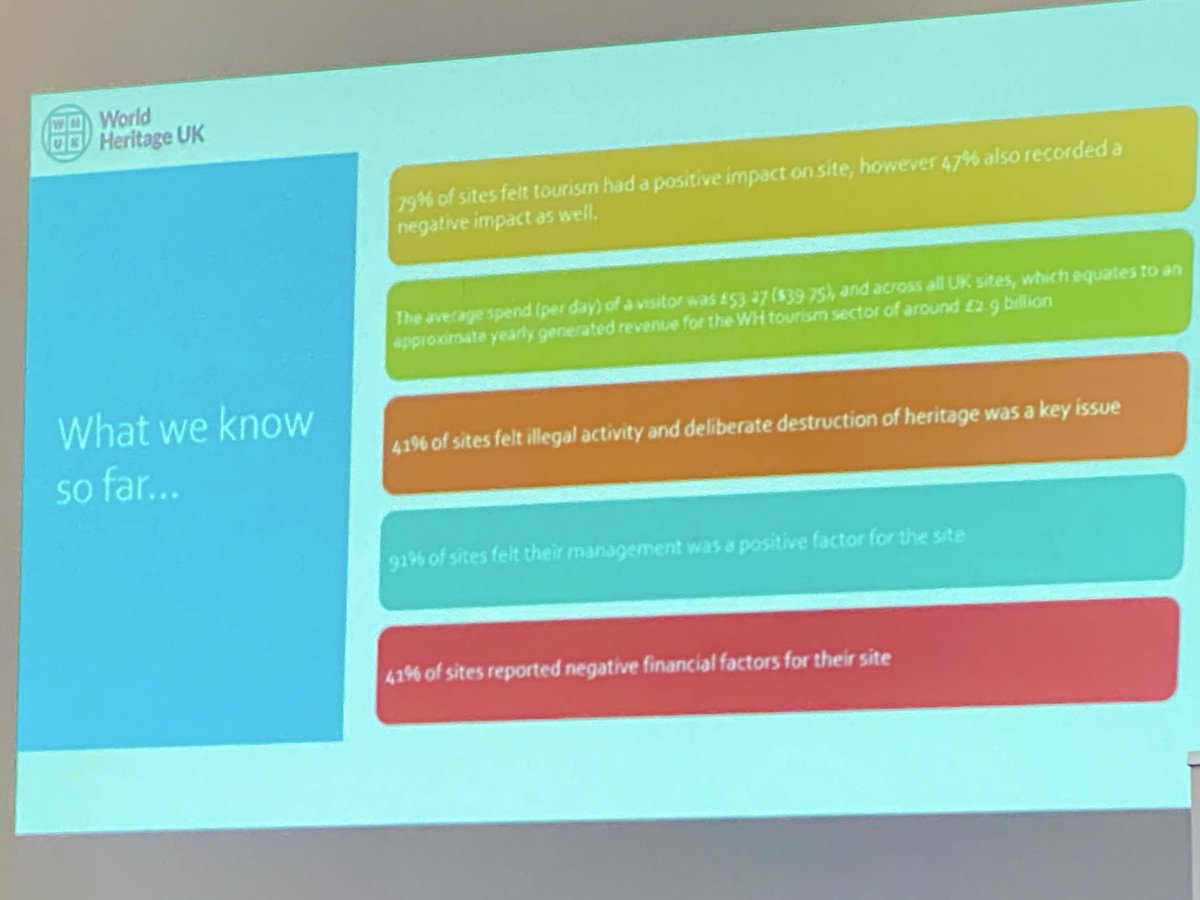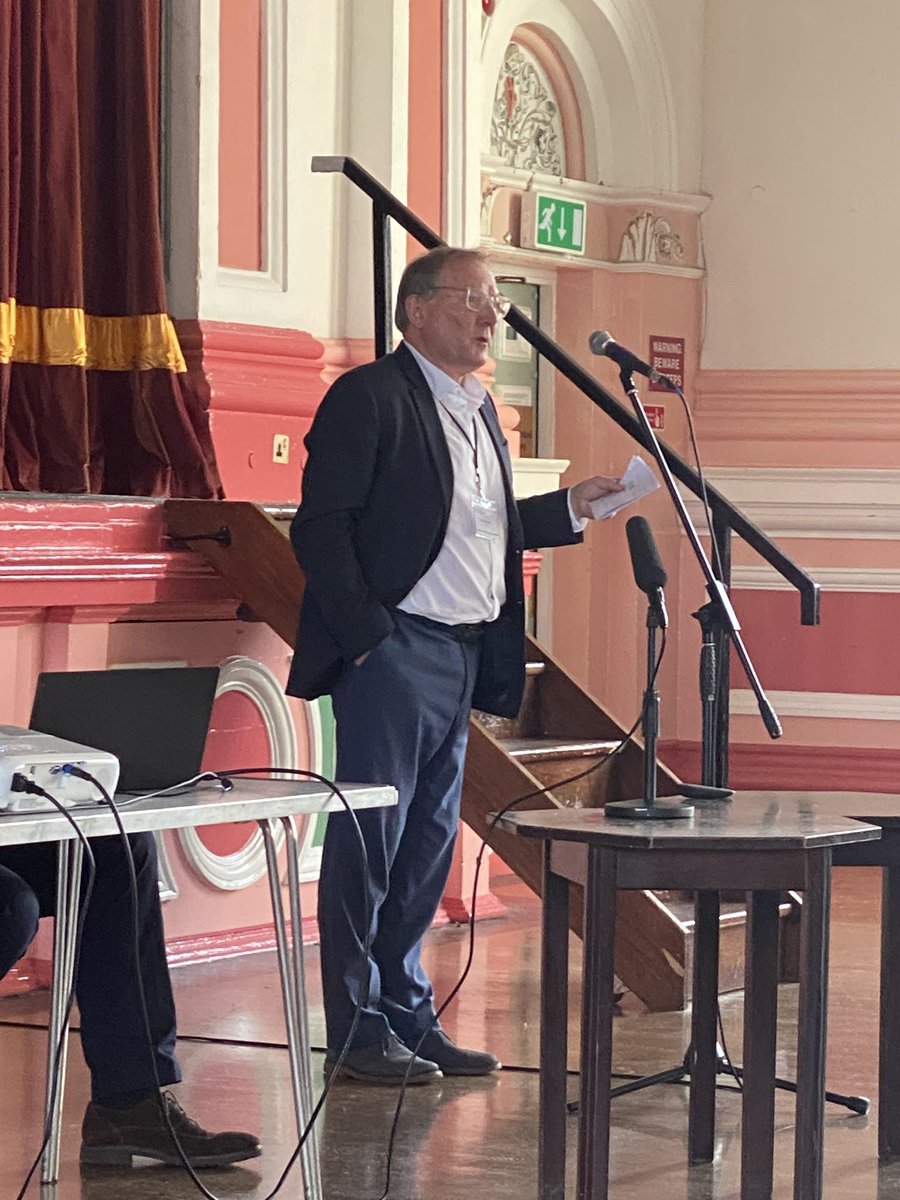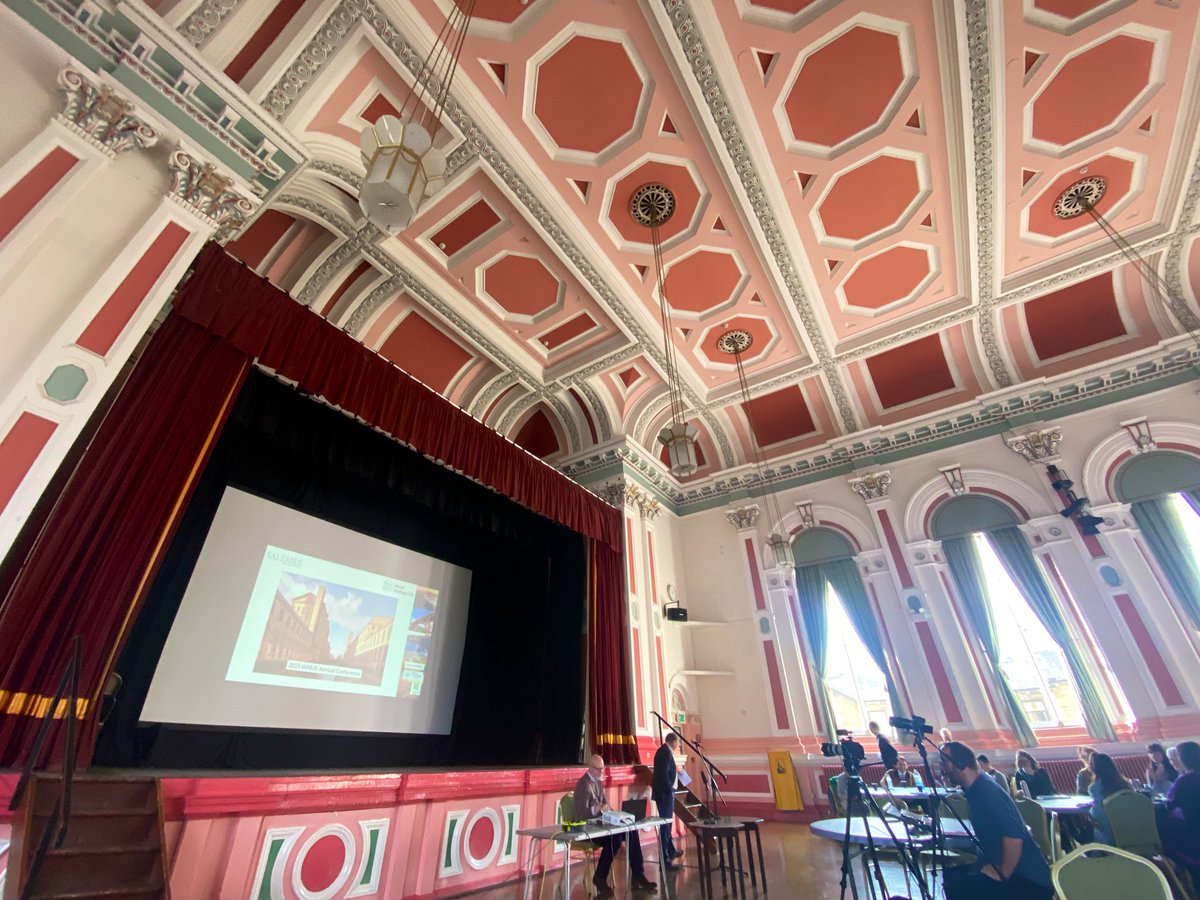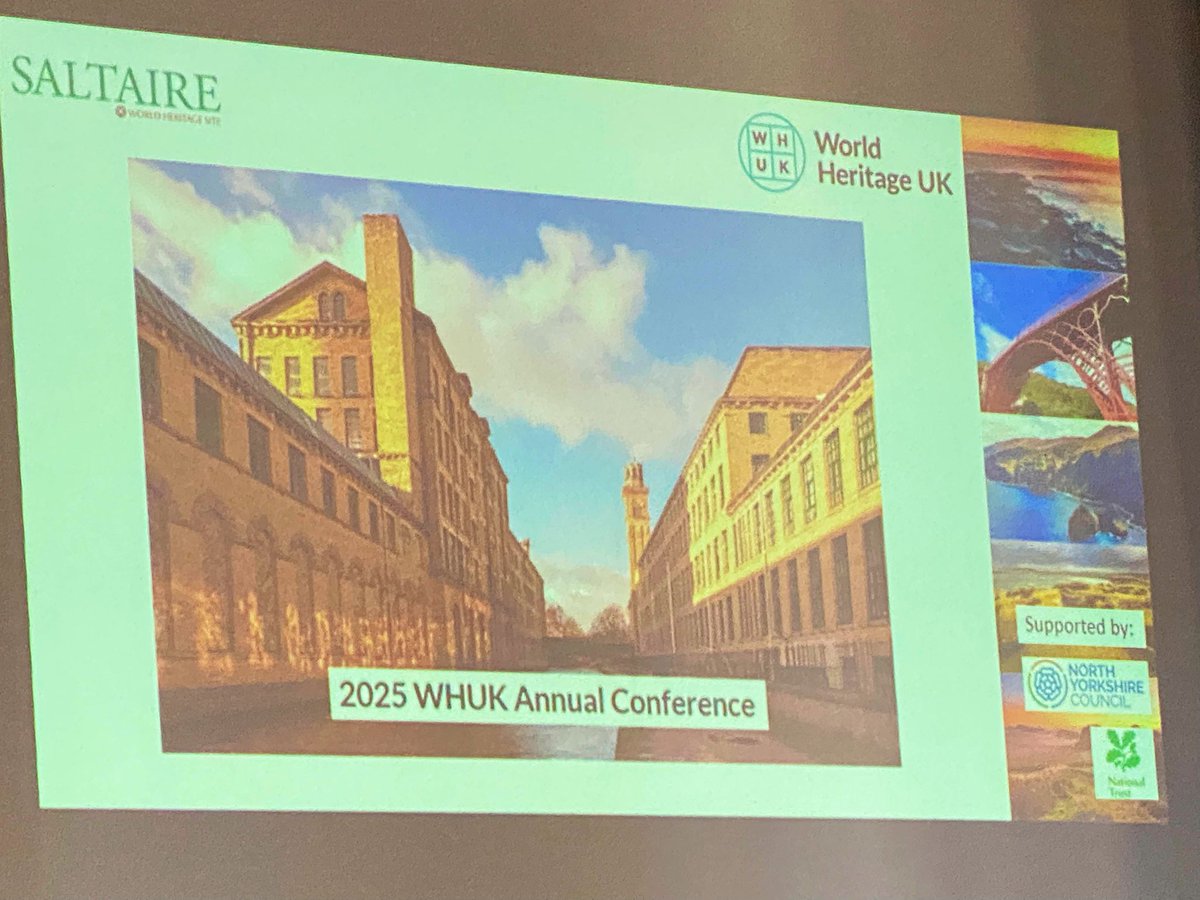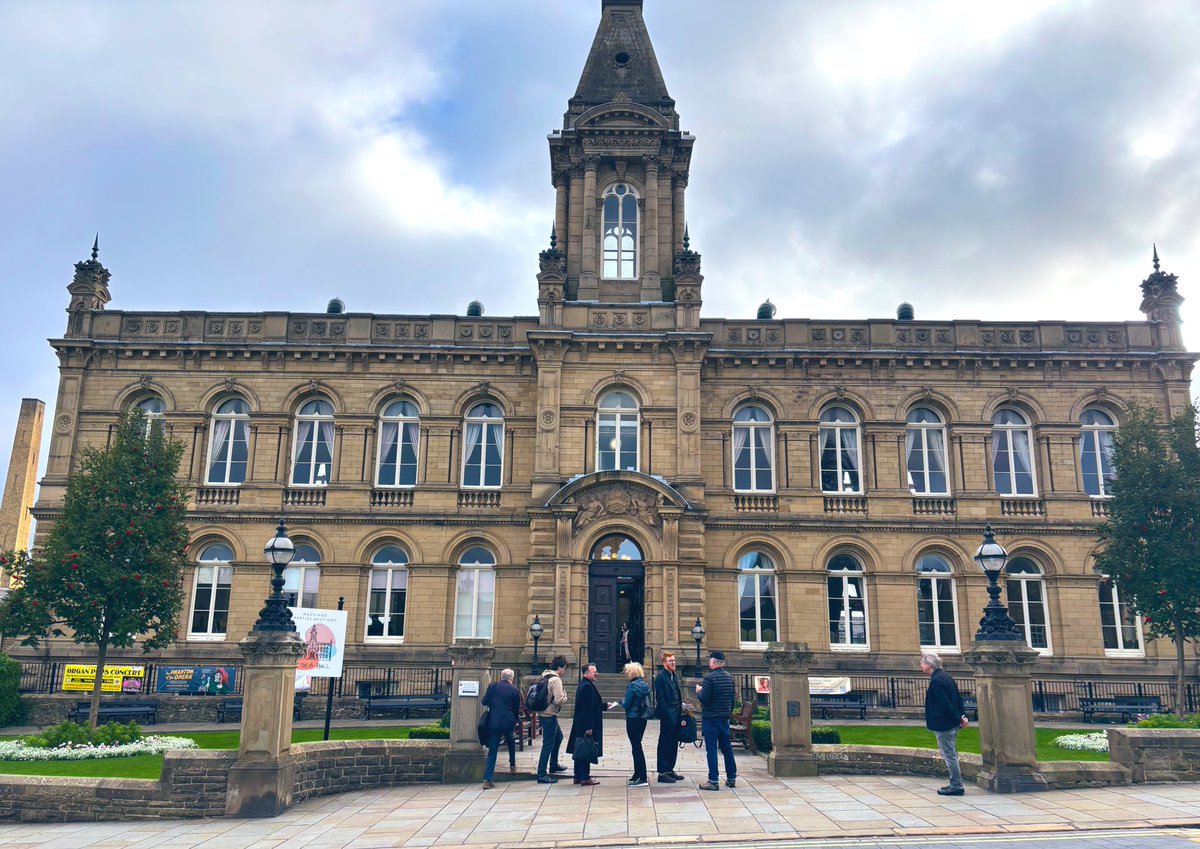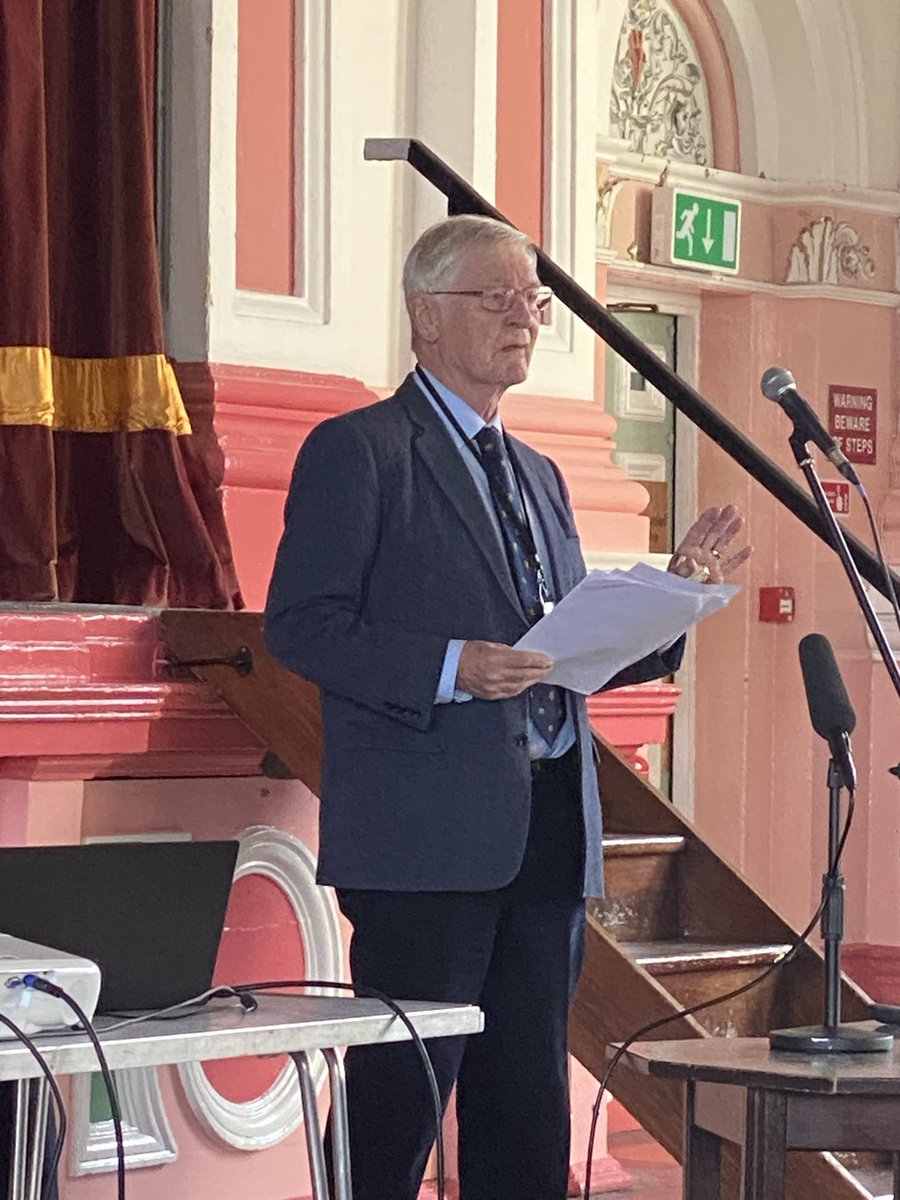Here to represent the @Heritage_NGOs at today’s #GreatExpectations conference at the @V_and_A with @Ecclesiastical @TheCCT @NatChurchTrust @KingsFdn - I’ll be tweeting along here. 



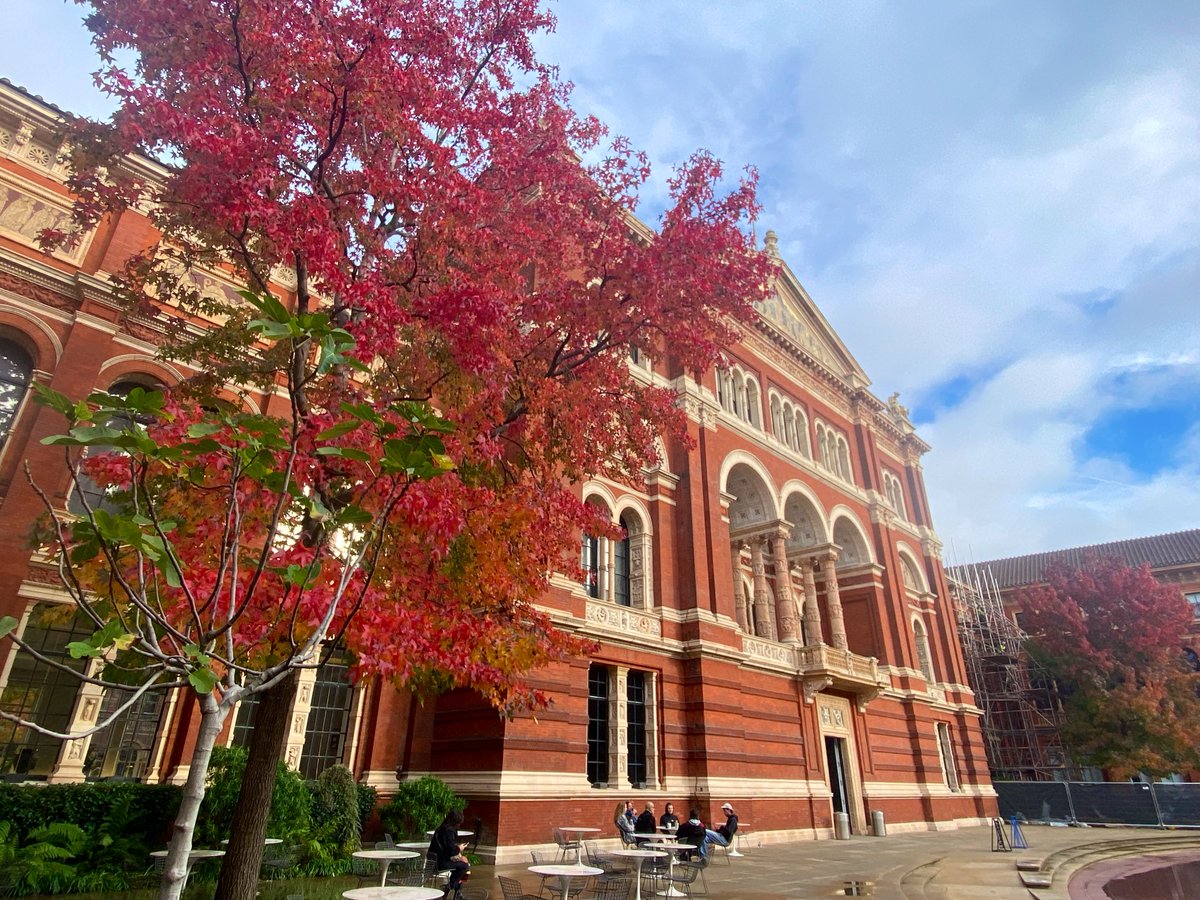
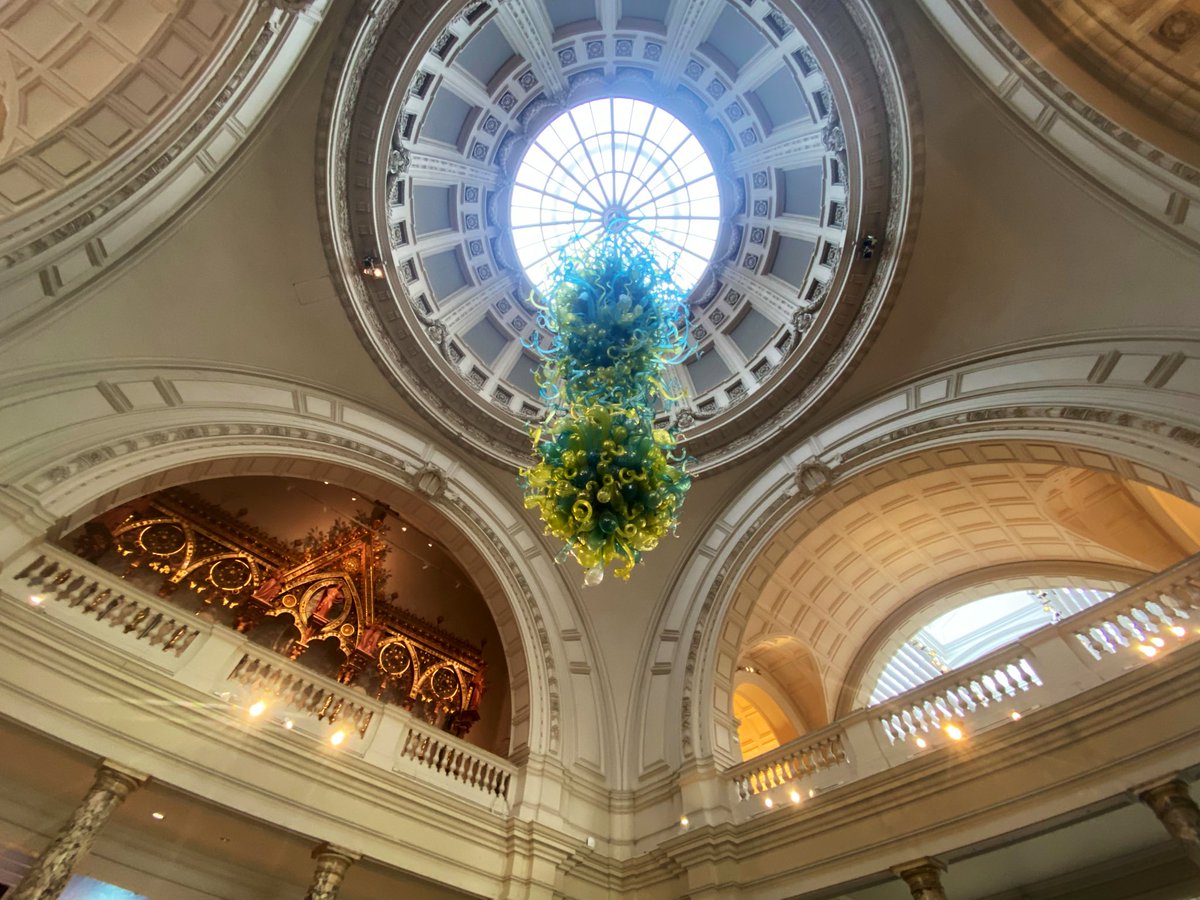
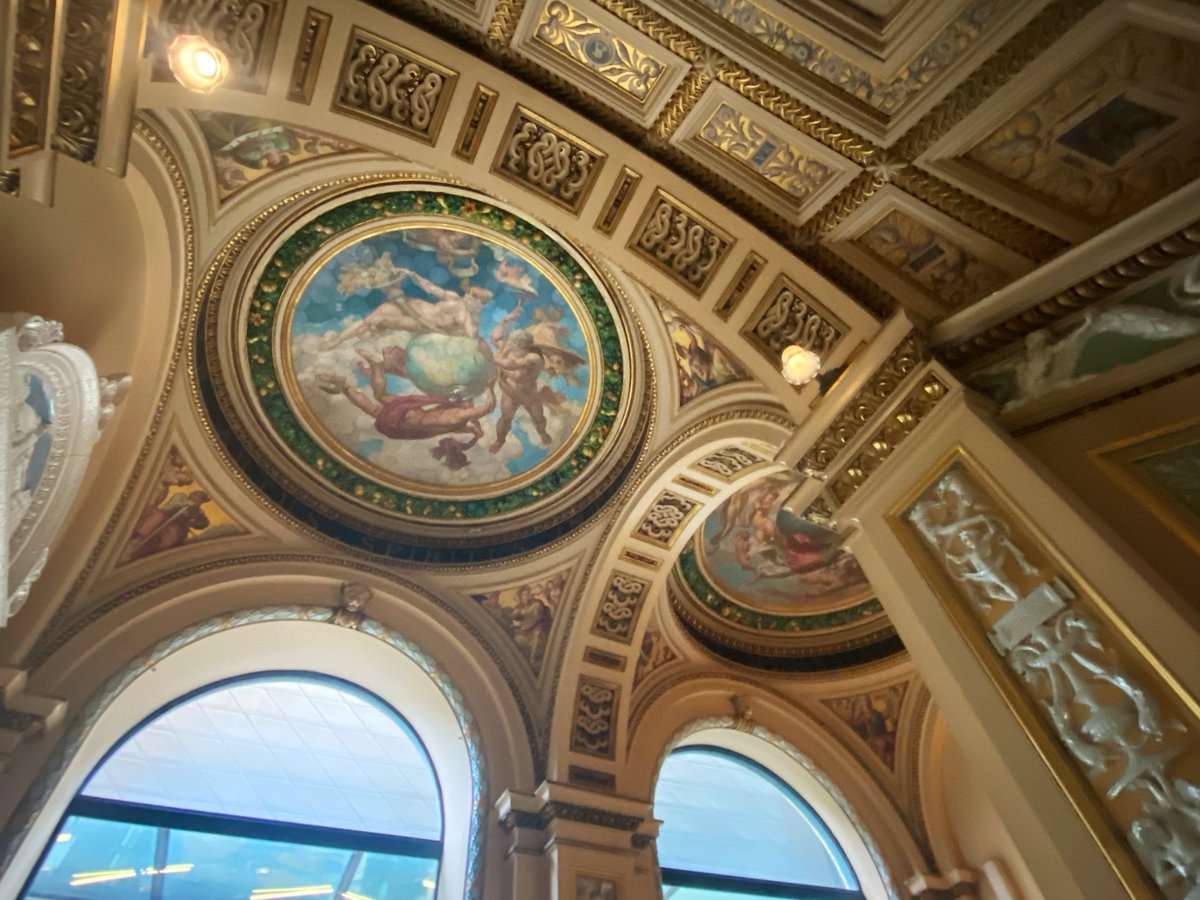
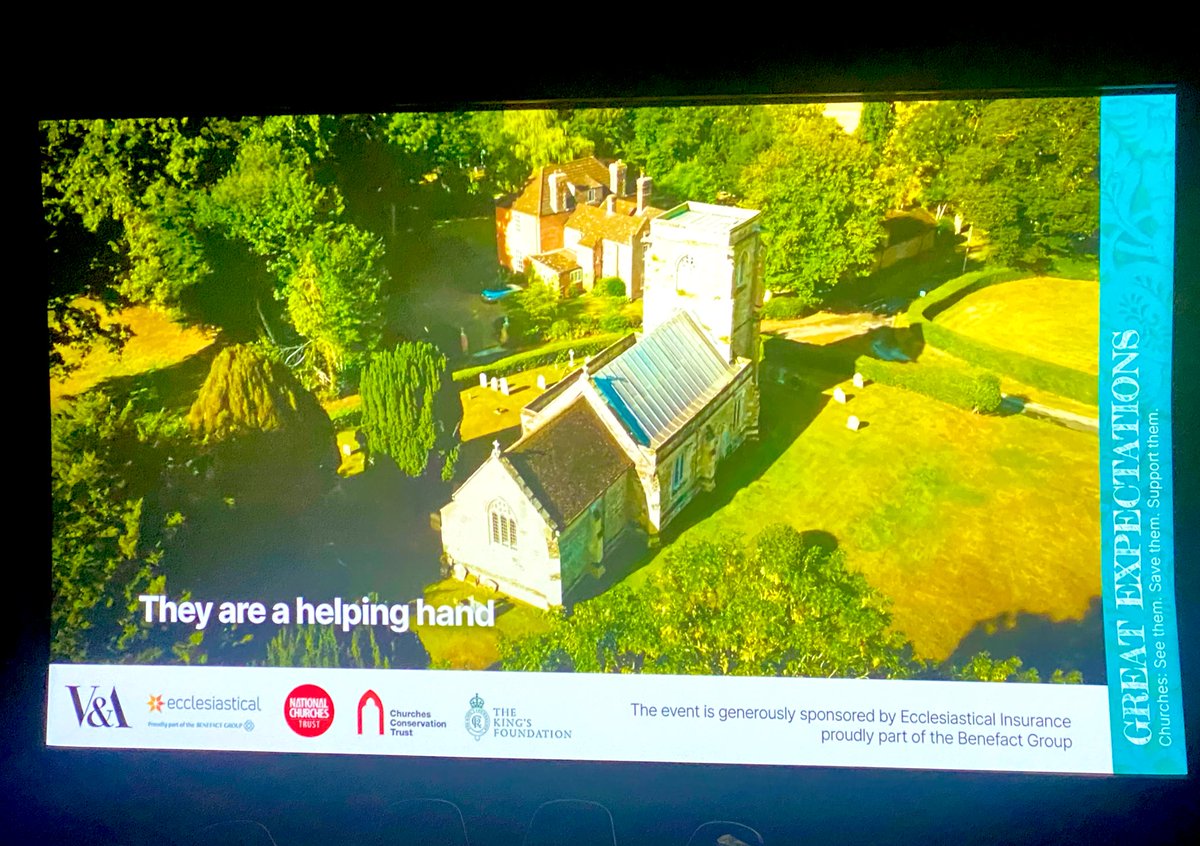
We are welcomed by @OliverJWCox talking about the @V_and_A history with being part of conversations about conservation & preservation. Inspiration from discussion at @Historic_Houses AGM around the role of the V&A 1970s exhibition on the Destruction of the English Country House. 

Richard Taylor talks about the 50th anniversary of ‘Change and Decay’ here at @V_and_A & the urgency of discussions about the future of churches. Hugh Dennis talks about his own church journey. Churches of all ages & types are an important part of regional identity and community. 

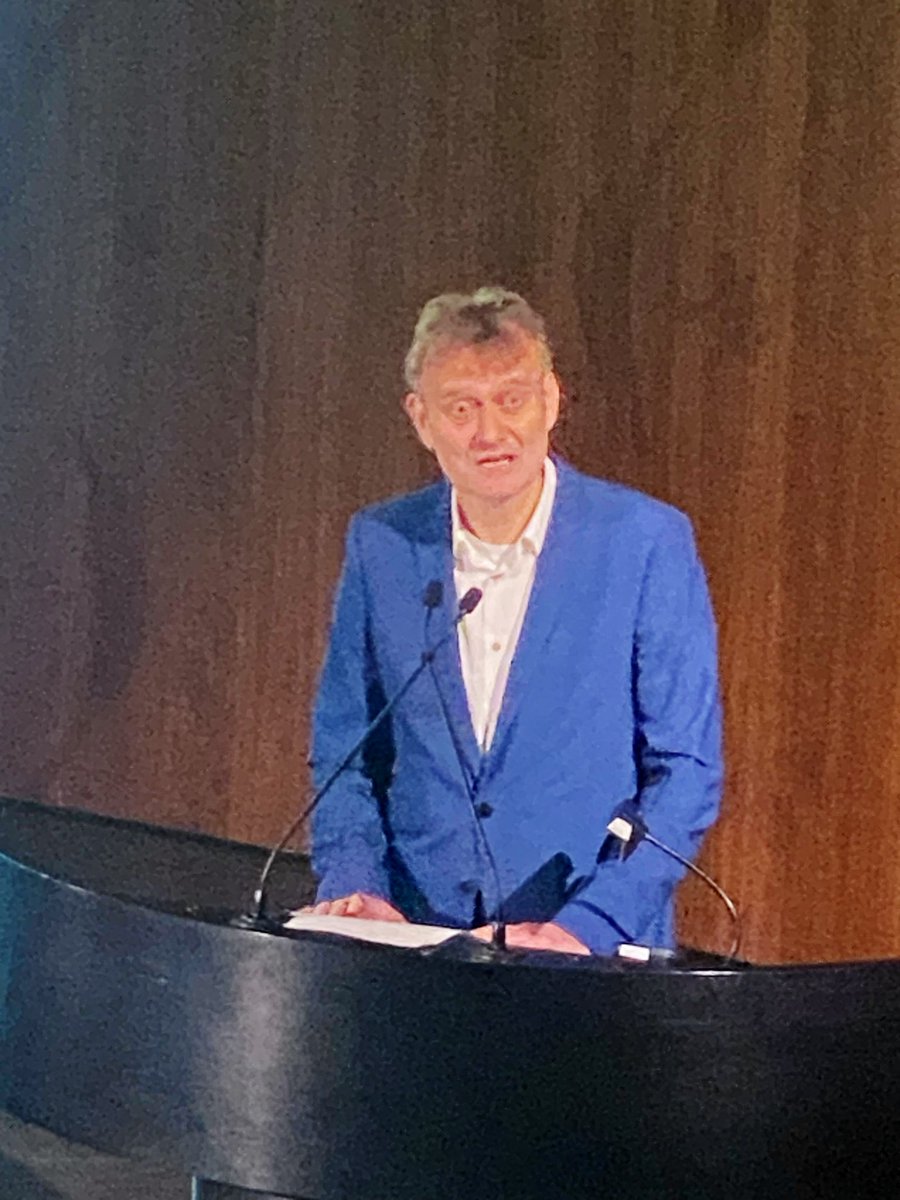
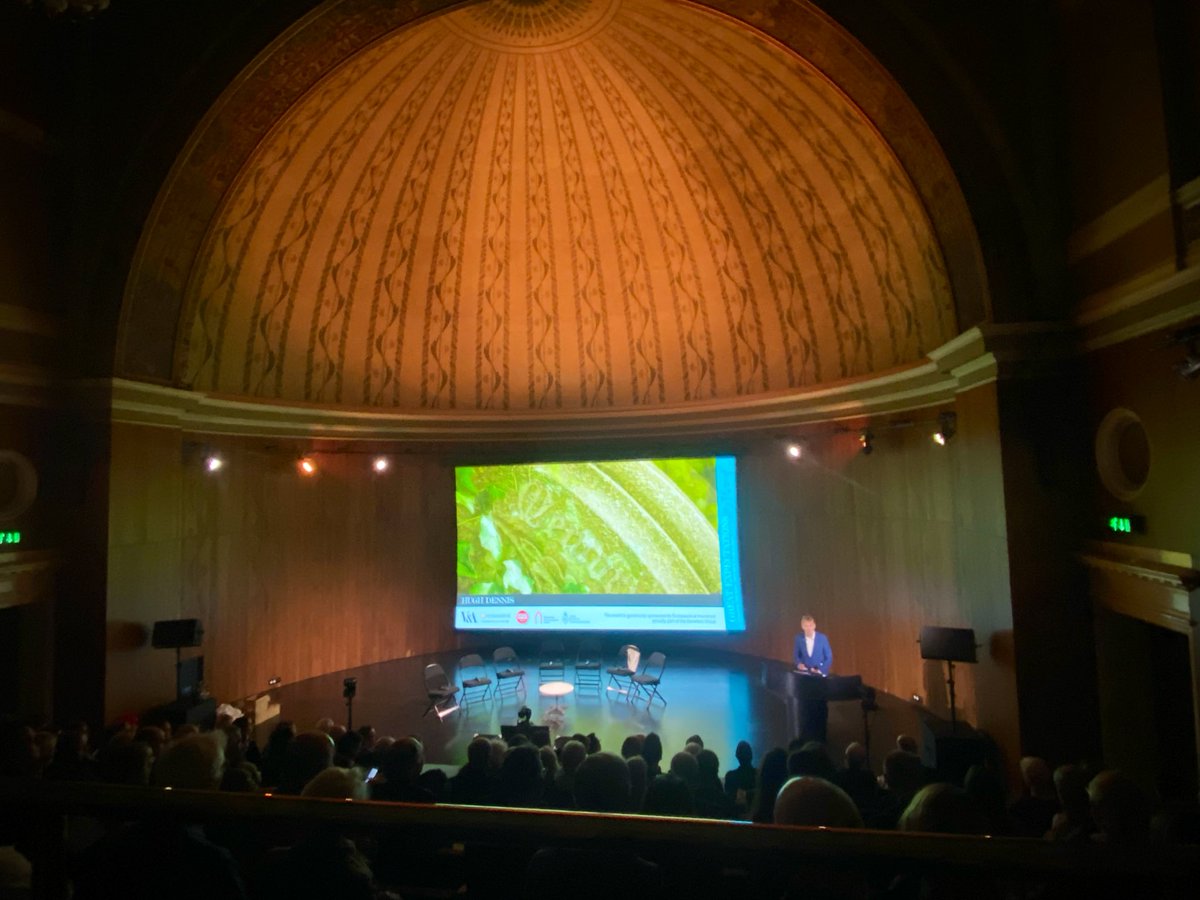
We are all here today Hugh notes to talk about one of the greatest heritage challenges we face as a nation. We all want these important places to remain part of their communities, open and kept in good repair.
Next up Rob Rinder talks about the importance of sacred spaces, where craftsmanship becomes a prayer, where beauty matters and caring for beauty becomes an act of hope. Where the sacred & the ordinary share a postcode. Spaces of shared belonging not remnants of faith fading. 

These buildings are the heartbeat of an extraordinary Britain - where we feed the hungry, hear the lonely. Places that we can walk into without having to buy or prove anything. Mixture of grandeur & understatement. These places lift us. Something greater than us.
These buildings show community & diversity are not opposites. They lift us, for both religious and non religious alike. Churches are the infrastructure of kindness and young people today in particular are ready to receive that message. It says something about the Britain we want.
A Britain that quietly helps each other without fanfare… let’s celebrate our volunteers who deliver this mission to deliver support & care. If that’s not something worth fighting for, what is?
‘If they crumble and fall down, peoples lives do too’ says Millstone restorer.
Next we are hearing from Carl of @NatChurchTrust with the results of their National Churches Survey. 





Some seriously good news about use and value - including key support services for those most in need. Filling critical gaps in statutory provision - rooted in communities. Churches working hard on practical as well as spiritual provision. 





But key risks. 1/10 churches have identified urgent repair for this year. Situation has got worse. Roof situation is dire. Risks other areas & roof repair can cost £100sk - (demonstrates importance of LPWGS & challenge of cap). 77% churches rely on local giving. 





Churches want to do more but are held back by need for more support & volunteers. Feeling of uncertainty across the country. Too often fighting crisis rather than being able to focus on the future. 



Next Ian Morrison @HistoricEngland - reflects on the challenge that most people don’t know historic churches need their help. We see and assume that they are part of the landscape & someone else must be looking after them. Most looked after by small groups of aging volunteers. 







Open to everyone. Living, working buildings. Complex & ongoing issues. 1/12 listed churches in England at real risk of being lost. Over 1000 on at risk register. Not just money - an awareness issue. Last month HE commissioned a poll. Only 10% recognise burden with local community 







But people will help if they know their help is needed. Need to know it’s a communal problem. We need to change how we talk about the challenge. When the public sees the need they do respond. Understanding what they about to lose - eg pubs, post offices, libraries etc., 

Particular challenges in Scotland. Taylor review now 7 yrs old. What does the right support look like? Hundreds of £m poured in for capital works. Over £900m in 26 yrs. A conservative estimate on certain programmes. Yes need funding - but better promoted, coordinated & accessible 



Yes we need conservators, skills, green investment etc…. But unrealistic to think Govt & heritage bodies can do this alone. We need to tackle the public relations challenge - everyone needs to understand that this is their responsibility. Here’s our collective challenge 💪 

We are now moving to a panel discussion. LPWGS support mentioned, craft skills & investment - training people hyper locally in these skills that are also green skills. Health & wellbeing opportunity - away from screens to engage say @KingsFdn 

Scottish perspective - importance of community opportunity and change of uses where buildings are at risk of remaining vacant. @Ecclesiastical perspective - thinking about the future of buildings as part of risk planning. Rebuilding our connective connections with communities 

Lessons from Scotland? How do we deal with loss of those buildings that haven’t stood the test of time but also move to understanding & communicating value. We need to find a different approach with increased secular society - wider community ownership models.
Need for learning from each other. Those case studies that have been able to make successful change working with those on the journey say @KingsFdn - yes need capital but also need to capture & celebrate the volunteering contribution. Can this contribution be better recognised?
We need to think about community & hyperlocal response - avoid creating multiple flexible spaces that have no use into the future. Leadership in denominations - thinking about local needs as well as national models.
Finally this morning @history_alice talking about public engagement with churches. She calls them the Crown Jewels of our heritage. Ancient, open, not curated in the same way as museums. Churches everywhere - more democratic. Tell stories of local people. Personal histories. 

Quiet decay of the parish church is cultural vandalism. Society isn’t noticing like it would if Stonehenge were to be dismantled. Heavy lifting left to local volunteers. A tsunami is coming. Social media following - so many people watching.basic explainer videos tend to go viral 

Every schoolchild should get the same opportunity as her to spend a day on heritage crafts. New Natural History GCSE. Wouldn’t it also be great to have a heritage crafts GCSE, or a DofE equivalent for heritage skills. It’s a moment to galvanise change.
First this afternoon - Dame @fionacreynolds with personal reflections since the two last key exhibitions here at the @V_and_A - public debate led to change & tangible action. She reflects on wealth tax proposals, incredible leadership of some private owners, @Historic_Houses … 

… role of the @nationaltrust & @EnglishHeritage & spirit of houses being open to the public & widely accessible including hosting concerts & events. So why are we needing to reconvene on the church conundrum? Unlike Europe there are no permanent economic schemes for support…
Also we aren’t as church advocates all quite singing from the same hymn sheet as perhaps the private house owners might be/have. Looking back at ‘Change & Decay’ - the issues & solutions are remarkably similar to those we face today. 

Too little changed despite enormous effort - far too little money. Solutions from 1977 remain the right ones - they need focused agenda & support to succeed. Just like house futures belong to everyone so do churches. Mission is community. Income & support from community activity.
Solutions: 1. Leadership - goes with culture & management change - church buildings are at the heart of mission, vision & determination to liberate engagement & dynamism locally. Skill to find new use & change mindsets - communities not just congregations. Access. Green heating.
2. Money - enabling government comes in here. Some generated locally but even in times of financial uncertainty saving our churches should be a case worth making as an investment. Clear the funding is not enough to make a difference - need to ask in a new way. Idea of local tax.
What is clear is we can’t carry on as we are. We need to liberate local energy and enterprise. Could make the difference needed. Roy Strong - churches as greatest visualisation of ourselves. 3. Agree with Ian Morrison - PR also key. Messaging to public.
Next is Stephen Cottrell Archbishop of York. 16,000 churches plus cathedrals. Much more than bricks & mortar. The Church of England wants to take up leadership challenge so churches can continue to support the nation. Mission at the centre will be key to this revitalisation. 

Church buildings as a tangible sign in each community of a God’s love & humans flourishing together. Community service and social action (over 31,000 projects per year) for welfare & wellbeing of neighbours. Good news of faith and practical help.
Work with refugees, disabled, outreach through the arts, places of heritage & creativity. Cathedrals increasingly filled with children doing music. Congregations are growing. Young people learning skills that will stay with them. These our our houses - local as well as universal
These our the places we have many of life’s most imputes r moments. What would we not do as human beings to keep this tradition alive? Funding, skills, dedication & love all needed. Volunteers give so generously. @HeritageFundUK support so important.
Important to build effective partnerships. Need to advocate to govt for permanency of the Listed Places of Worship Grant Scheme. Partnership between church & state. Need to recommit ourselves to this. Both heritage & for community & sacramental sign of God’s love in the landscape
In a time of political division and society challenge we should be strengthening those places that serve to bring us together.
Next panel discussion chaired by @GregrehBoo looking at the power & social impact of how these buildings can change lives. Vision is important. Bishop Rumsey talks about seasons & an acknowledgement that we need to recognise these for individual churches & for denominations. 

Thinking about living churches as part of an ecology of life. Preserving the genius of church buildings but also as incredible centres of placemaking, engines of local charity & welfare, incubators of art, creativity & tourism. Recognition of this keeps them alive.
Recognition of some churches in winter, ancient & patient places that may not need to close but need to be supported through their winter. Support needed across the heritage sector for this approach until they can return to life.
We need to break the mould, think the unthinkable & be the living churches we need to be. Public life needs to lose its unease in speaking about spirituality & churches need to be less possessive & speak better ‘human’. Partnerships key & clue - across & between institutions.
Need to do that work below the soil, together, like the systems in nature, to ensure life in the future.
Role of living churches in healing divisions… being diverse and loving churches, open to those of faith and no faith. Volunteer network - place & space to share stories. Sharing hospitality. Neutral spaces for mediation? Work of common good & reconciliation.
Aspiration for neighbourhood - encourages openness to connection with others. Historical sense of responsibility - we can see the marks of past conflict & they can be places of reconciliation. Great to hear from Suzie of @hopeintoaction - the feel of being loved & wanted there.
The next keynote is author Luke Sherlock. Reiterates collective Crown Jewels of our heritage that churches represent - we live in politically tense & febrile times - questions about identity, place & pride. Future of church buildings is ripe topic for now - affects everywhere.
It’s a shared inheritance. Churches important for mental health & the impact they have in us. Music, song, life, community important for those same reasons. What would England be without its churches to wander round? Authors who have riffed off these places. Part of national DNA.
Social media can play a big role in a call to action for the public. Need to be some metrics to help people into a story greater than themselves here. Always comment when cathedrals start to charge - because people don’t know how the money needs to be raised. Common messaging.
Some other themes coming through - Churches as filming locations flagged - how can we make this easier to coordinate?
Focus also on the fun people get from volunteering & engagement - and fundraising. Also a tension - hyper local vs national solutions/singing with one voice.
Focus also on the fun people get from volunteering & engagement - and fundraising. Also a tension - hyper local vs national solutions/singing with one voice.
Final panel with a range of orgs & denominations. What does good change look like? Sophie Andrae of RC Church - it’s about now. Capital funding crisis. Unexpected cap on LPWGS cost a lot for projects underway in unexpected VAT. 3000 RC churches 750 listed. Often deprived areas. 

RC church largest minority denomination. Growing congregations, welcoming worldwide worshippers. Future looks bleak without capital money & churches can’t always be used for all community uses in the same way as other buildings. But hugely diverse communities using these places.
Getting roof back on illustrates the huge difference that can be made beyond once the basics are there.
Welsh church perspective - non conformist heritage in Wales facing challenges. Development phase with @HeritageFundUK mapping the issues. Vast range of denominations. Coordinated approach tricky. Talk pragmatically - what is good in open terms, during closures & sometimes after,
Vast amounts of heritage in Wales already lost. Balance between adaptation and preservation. Dealing with sacred spaces. Causes may continue even if religious space closes. Jon conformist chapels paid for by community - tradition of creativity - how can this be maintained?
Role of faith tourism? Many of these like RC Churches are 19/20thC buildings - don’t always have the medieval appeal. Needs an understanding of where they came from to understand how special they are. Some denominations can’t accept lottery funds (gambling) so further challenge.
Adaptations for reuse. Few chapels are listed - key thinking in planning process - understanding their local importance.
Scottish perspective - people want to give their time, effort & care to these buildings. Church of Scotland disposing of 800 churches in next few years. 40%. Other denominations too. Lots of over provision because of divides in the past. Communities coming forward to save them.
Importance of succession planning & continuity of support to help the people sustain the buildings. Without people there can be no church. Not just the fabric - the people and volunteers who go with them. 1/3 churches from Church of Scotland going to community groups.
Next @KingsFdn re: building a community. Buildings & infrastructure one element but not a community without people coming v together. Belief as well as belonging. We’ve never had so disenfranchised & lonely populous. What can we do about this. Yes funding issue but skills gaps.
People are feeling a lack of connection and any project pulling people together is attractive. Also worldwide interest - looking to us for shared learning on restoration and care of religious buildings.
Emily Gee of @CofE_Churchcare - keeping church buildings fit for mission & people - partnerships, resilience, funding : huge public value & huge volunteering effort locally. Nationally grants & support, partnerships make funding go further - @ThePilgrimTrust & @HeritageFundUK
Focus on future skills. @HistoricEngland & @benefacttrust also key partners. Second area - resilience & change - diversity of use and adaptation. Pioneering net zero programmes. Accessibility eg through barrier-free belonging.
Finally funding - critical. But galvanising funding that can go further & be used creatively.
Next @friendschurches Rachel Morley. Saved 70 churches. Not an acquisition charity - want these churches to remain in use. Currently U.K. is a country where you could demolish your church VAT free but pay VAT repairing it.
Financial support needed - permanent package from Govt.
Financial support needed - permanent package from Govt.
Even in challenging times Govt could commit to principle of support through programmes. But funding isn’t the panacea. Trusts working v hard with limited resources but Govt needs a review of the current situation for all redundant churches then present suite of solutions.
Funders want numbers & high engagement. But rural churches are harder to access but no less important. Some funders need to acknowledge that sometimes keeping things going is enough. Proportionality of expectations from funders. Diversification of use not always appropriate.
Many of the solutions we think are innovative were around in the 70s. We shouldn’t always have to justify new & innovative use just to give a reason for saving them. Also want a commitment from church bodies not to sell any G1 or 2* for domestic use - they are owned by the nation
Rachael finishes by saying we need emotion, energy, leadership, generosity & cooperation if we are going to have a fighting chance.
Finally Welsh perspective - the people who care for these places are heroes, model of nationally important assets being looked after by local people is a strength of our sector & fundamental & hope it continues. So there is hope. We see new people coming together to find a future
The future? Congregations need to be open to new ideas & new people, flexible in the way we transfer these buildings to new people, be patient - solutions take time and that can be ok. Need to be hopeful. It’s worth it. 

Here’s coverage from the day via the Guardian theguardian.com/culture/2025/o…
The evening awards event, introduced by @TristramHuntVA - so much passion & contribution but the challenges are real. So many churches on the brink but let’s carry on the conversation and collaboration in hope. These extraordinary buildings at the heart of shared heritage. 

The group CEO at @Ecclesiastical Mark - generous sponsors of today. Roy Strong - our parish churches are the greatest treasure our nation possesses. For many of us they are places of solace, spirit & celebration. @Ecclesiastical back to Victorian roots & insure most of them. 

Reached staggering milestone of giving £250m to church heritage as an organisation.
The @MarshAwards has supported the award to volunteers - Marsh gives critical unrestricted donations as part of their work. Partner with 40+ orgs. Awards - over 200 nominations. Volunteering - you feel valued & wanted as well as giving. Impact on congregation of care. 



4 winners - from each part of the UK. Each shining example of churches as centre of faith & so much more. England - St Peter & Paul, Old Bolingbroke Lincolnshire. Restoration & genuine outreach. 30-40 supporters - attitude of self reliance. Beacon of heritage, hospitality, hope. 

For Wales St Sadwrns - commitment to hospitality & sustainability. One of two churches in wales to have a gold eco church award. Vision, compassion & deep love of community. 

For Scotland Ness Bank - big on hospitality, outreach to community - faith and community going hand in hand. 

For Northern Ireland, Sinclair Seaman’s Church providing community & support including for seafarers. nationalchurchestrust.org/church/belfast…
Good to see lots of colleagues this evening & always a treat to see the stained glass galleries after hours. That’s a wrap! 







@threadreaderapp unroll
• • •
Missing some Tweet in this thread? You can try to
force a refresh





